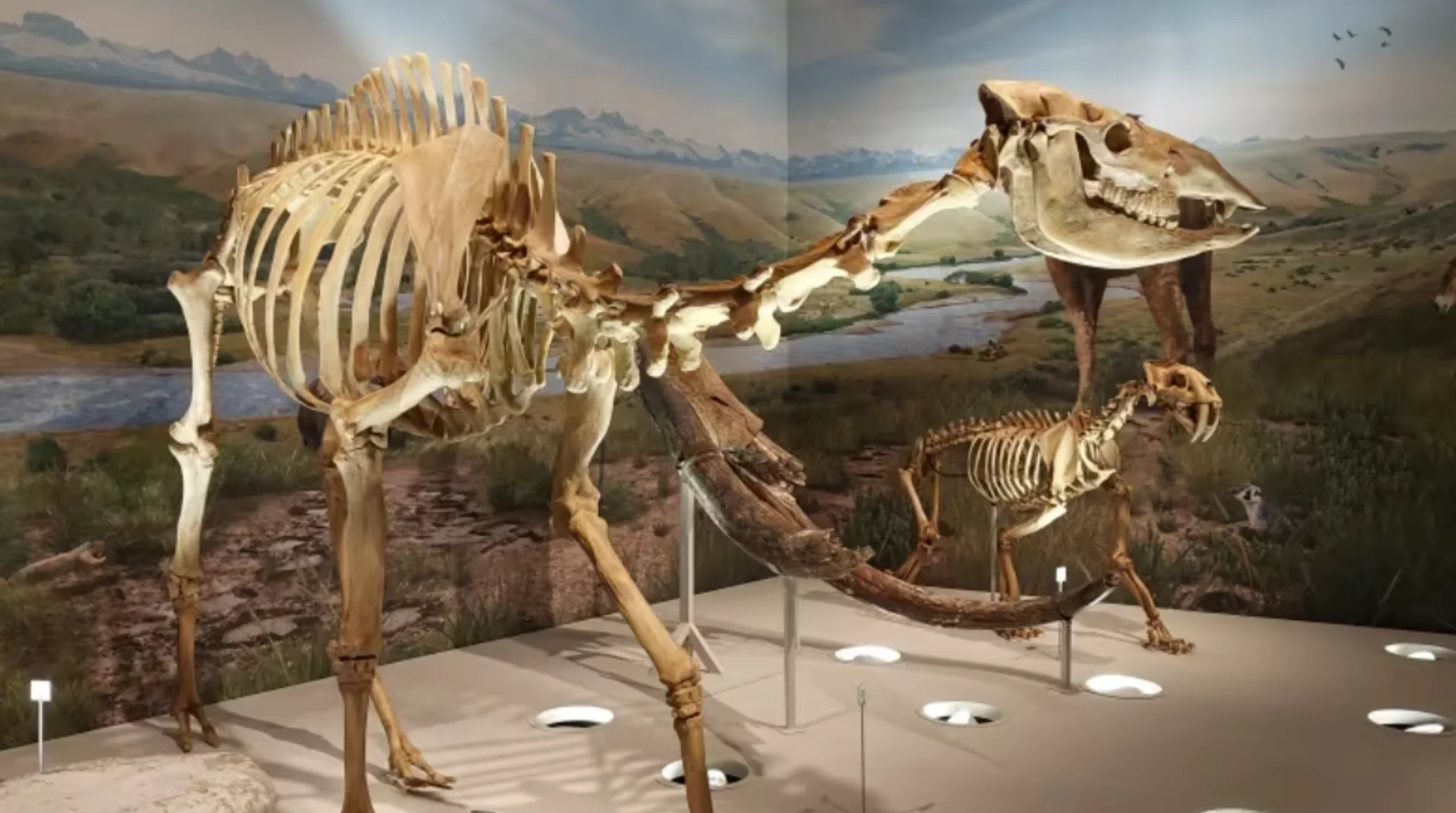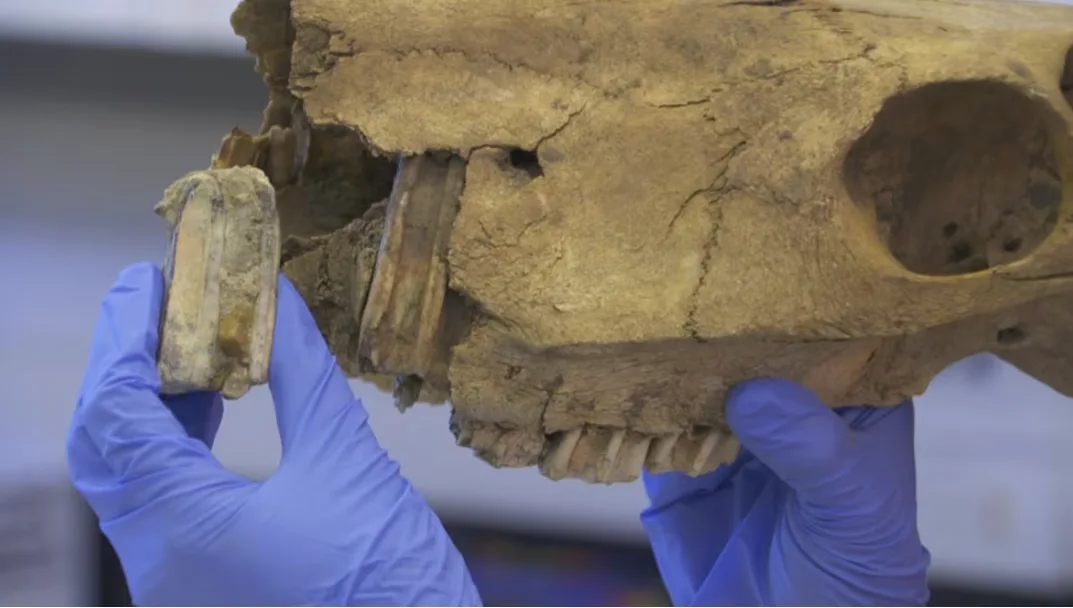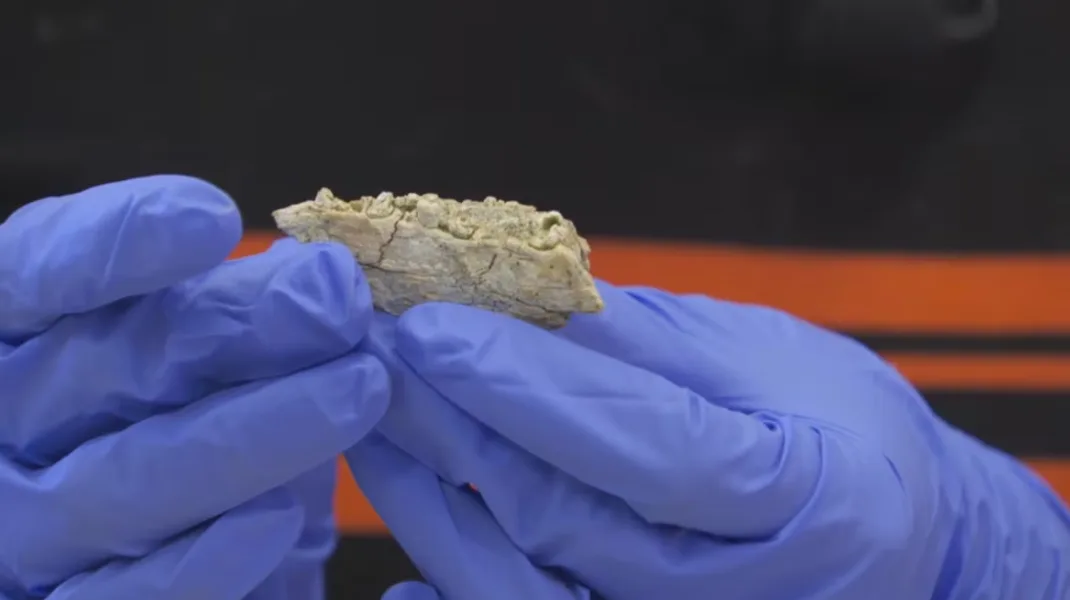
Alberta paleontologists studying rare horse and camel fossils
A nondescript gravel pit in rural Alberta has been a boon for paleontologists.
At the site in Big Stone, some 380 kilometres southeast of Edmonton, paleontologists have been finding rare fossils of prehistoric camels and horses from 1.5 to 4.5 million years ago.
By studying these fossils, researchers get a glimpse into Alberta's prehistory.
Kelsey Martin, the aggregates manager at the Special Areas Board of Alberta, noticed that in 2019 rocks they were extracting from a particular gravel bed looked different from other sites.
Martin wanted to know how old the rocks were, and contacted the Royal Alberta Museum for help.
SEE ALSO: Natural, human impacts on animals seen in 2,000-year-old condor poop
Tempered expectations
Christina Barron-Ortiz, a paleontologist at RAM, hoped they'd be able to find some fossils, which could help date the site.
But she didn't have high expectations.
"Usually, it's really hard to find fossils in gravels," she said.
"We have visited many gravel pits across the province, and often we find nothing."

A gravel pit at Big Stone, Alta., where the fossils were found. (Submitted by Christina Barron-Ortiz)
The gravel beds are what's left of ancient rivers, she said, and rivers tend to break down animal bones into tiny fragments.
The Big Stone site significantly exceeded Barron-Ortiz's expectations.
When they visited it in 2019, her colleague Katherine Bramble found a complete and well-preserved premolar tooth from an upper jaw of a prehistoric horse, to Barron-Ortiz's great excitement.

Christina Barron-Ortiz holds up the fossilized upper right premolar tooth of a prehistoric horse next to a skull of a modern horse (David Bajer/CBC)
Martin said that day happened to be one where a lot of elected officials and administrative staff visited the site.
"So — lo and behold — as they got off the bus, both Christina and Katherine said, 'Hey, this looks unique.' And they pulled up a fossil of a horse tooth, just as everyone was coming off the bus," Martin recalls.
"Kudos to them for going and looking, because it's kind of a hundred- or a thousand-to-one odds that you're going to find material," said Duane Froese, a professor in the department of Earth and atmospheric sciences at the University of Alberta, who specializes in the ice age and past environments over the last 2.5 million years.

A horse molar, found in 2023. (Submitted by Christina Barron-Ortiz)
Froese said the Big Stone site is likely to prove a rich source of fossils.
"The fact that people found them just walking around tells you that there's probably a lot there," he said.
Bones give clues about prehistoric environment
Barron-Ortiz said the tooth they found is anywhere between about 1.5 and 4.5 million years old and fossils from that period are "exceedingly rare."
Paleontologists have been returning to the Big Stone site since 2019, and visited it twice this year. Besides finding horse bones and teeth, they also found camel bones in the Big Stone pit.
Both horses and camels evolved and diversified in North America about four million years ago, and disappeared about 10,000 years ago.
Prehistoric camels, like horses, migrated to Asia, where they evolved into modern bactrian and dromedary camels. They also moved to South America, where they evolved into modern llamas and alpacas.

Christina Barron-Ortiz holds the fossilized camel metacarpal bone, found at Big Stone, Alta., beside the bone of a modern llama. (David Bajer/ CBC)
So far, paleontologists have been finding mostly camel and horse bones because of how abundant they were during that period. They were grazers, well-adapted to the dry, grassy steppe in Alberta between 1.5 and 4.5 million years ago, Froese said.
"We're thinking about things that are living off of probably grasslands. That's consistent with what we think about the environment at that time."
But RAM scientists have been finding other fossils, too, that they have not been able to identify yet.
This September, for example, they a fragment of the lower jaw of an unknown animal. Its teeth are broken, but the roots are still there.

A fossil of unidentified animal found at Big Stone, Alta., in September. (David Bajer/CBC)
"That may give us a clue to help us identify what it is," Barron-Ortiz said.
It wasn't a horse that the jaw belonged to, she said, and RAM scientists don't believe it was a camel, either. Potential candidates include peccaries, which are related to pigs, but it could also be a carnivore, she said.
"We haven't had the time to really sit down and take measurements, and start to compare it to other fossils to really get a sense of what it could be," she said.
Dating the fossils
Scientists are also working on dating the fossils more precisely.
At this time, they only have a range that covers millions of years. The fossils are too old for carbon dating, so paleontologists and geologists working on them have to use different methods.
DON'T MISS: This sacred site holds thousands of ancient rock art images
"We've collected samples to see if we could find any pollen grains, which would give us an understanding of the vegetation that lived in the area," said Dale Leckie, a geologist with a specialization in reconstructing ancient environments.
They are looking for remnants of volcanic ashes in the site, which would allow them to date the site more precisely.
Many volcanic eruptions have been studied, and linking ash to a particular eruption would allow scientists to determine the age of the site.
They are also considering dating the deposits using paleomagnetism. At irregular intervals, the north and south poles reverse, and this change in Earth's polarity is imprinted in the rocks.
Paleontologists intend to keep coming back to Big Stone, Barron-Ortiz said, and Martin is optimistic about the possibility of finding more fossils there.
"We definitely are planning on coming back next year," Barron-Ortiz said.
"Hopefully over the winter, there'll be more erosion, and some of the bones that are just about to be exposed get exposed."
This article, written by Dennis Kovtun, was originally published for CBC News.
Thumbnail image courtesy of Dennis Kovtun/CBC.










